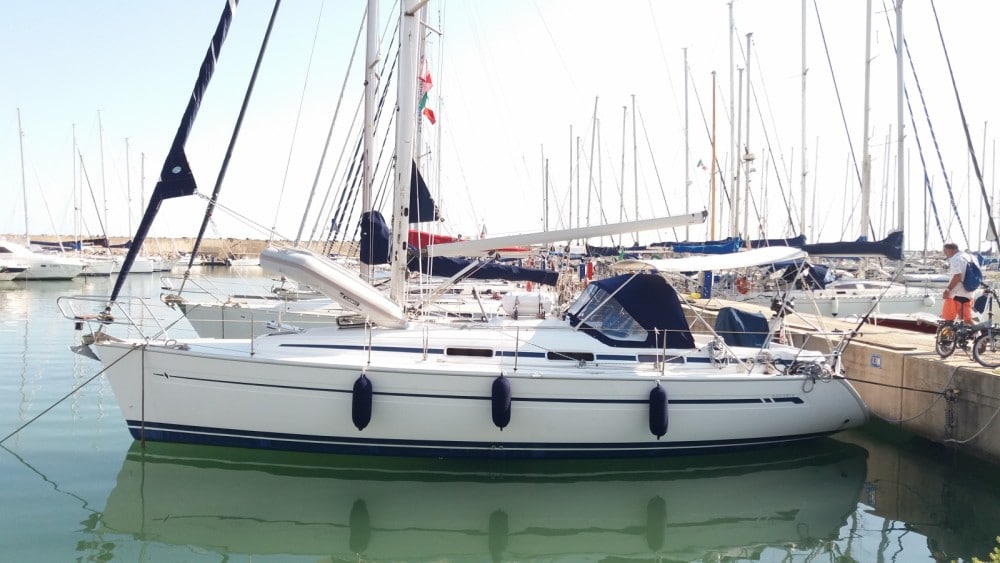Usé una V … Hélice fija de dos palas durante unos cinco años. Nunca tuve problemas con eso. Sin embargo, no me gustó el hecho de que cuando navegaba tenía que tener el manejo en marcha y había escuchado historias sobre cuando navegaba rápido, en realidad puede girar el motor hacia atrás y succionar agua (aunque nunca me pasó a mí). Intenté varias veces dejar el cambio en neutral, como algunos me recomendaron, pero el motor temblaría bastante y no me sentía cómodo con eso. Me explicaron que este temblor era un síntoma de la gran cantidad de resistencia que realmente tiene la hélice fija (que parece más de lo que hubiera pensado).
También quería reducir la resistencia al navegar (es divertido ir rápido cuando las condiciones son adecuadas).
Hice una gran cantidad de investigación sobre las hélices plegables frente a las plegables y, dado que mi bote se maneja como un sueño tanto hacia adelante como hacia atrás, quería mantener o tal vez mejorar estas características. Decidí que la hélice de plumas era la única manera.
Comencé a investigar y comparar todas las hélices de plumas que pude encontrar y estuve en la exhibición de botes en Dusseldorf tres años seguidos, dos de los cuales pasé un buen rato buscando e inspeccionando «de manera práctica» los diversos fabricantes en el muestra.
Tomé mi decisión final en base a lo que, en mi opinión, era la hélice mejor diseñada, también la más cara, este es a menudo el caso, pero no siempre.
De todos modos, monté la nueva hélice Ewol en junio pasado y, aunque creo que me gustaría un poco de teca (una característica extremadamente agradable con el Ewol), ya que estoy llegando con bastante facilidad y rapidez al límite máximo de rpm máximas. Sin ajustarlo, tengo una velocidad máxima mucho mejor, tengo la misma velocidad de crucero que la V … hélice. a 2000 rpm. La marcha atrás es mejor con el Ewol, creo que porque son tres cuchillas en lugar de la V … dos. La experiencia de navegar es muy notable y realmente me hace sonreír. Especialmente en aire ligero. El bote me parece más «resbaladizo». Por supuesto, es difícil documentar con pruebas contundentes, pero creo que estoy obteniendo un buen 1 a 1.5 nudos en vientos de hasta 20 nudos.
El próximo verano lo retocaré un poco e informaré.
También pagué extra para pulir el accesorio (pensando que lo mantendría limpio con una almohadilla de 3M). Esto fue en contra de la recomendación de Ewol. Fue un error, así que este invierno lo arreglaré un poco y usaré la pintura que recomiendan.
Zai
Original Text
I used a V…. two blade fixed propeller for about five years. Never had any problems with it. However I didn’t like the fact that when sailing I had to have the drive in gear and have heard stories about when sailing fast it can actually turn the engine over backwards and suck in water (never happened to me though). I tried a few times to leave the gear in neutral, as some have recommended, but the engine would shake quite a lot and I didn’t feel comfortable with that. It was explained to me that this shaking was a symptom of the large amount of drag that the fixed propeller actually has (which seems more than I would have thought).
Also I wanted to reduce drag when sailing (it is fun to go fast when conditions are right).
I did a huge amount of research about feathering vs. folding propellers and since my boat handles like a dream both in forward and reverse, I wanted to keep or maybe improve these characteristics. I decided that the feathering prop was the only way.
I started to research and compare all of the feathering propellers I could find and was at the boat show in Dusseldorf three years in a row two of which I spent a good bit of time looking and inspecting « hands on » the various manufacturers at the shows.
I made my final decision based on what in my mind was the best engineered propeller, also the most expensive, but this is often the case but not always.
Any way I mounted the new Ewol propeller this last June and although I think I would like to teak it a bit (an extremely nice feature with the Ewol) as I am getting quite easily and quickly to the high end of the maximum rpm. Without tweaking it I have a much better top speed, I have the same cruising speed as the V…. prop. at 2000 rpms. Reverse is better with the Ewol, I think because it is three blades instead of the V…. two. The sailing experience is very noticeable and a really makes me smile. Especially in light air. The boat just seems more « slippery » to me. Of course it is difficult to document with hard evidence, but I believe I am getting a good 1 to 1.5 knots in winds up to 20 knots.
Next summer I will tweak it a bit and report back.
Also I paid extra to get the prop polished (thinking that I would just keep it clean with a 3m pad). This was against the recommendation of Ewol. It was a mistake, so this winter I will rough it up a bit and use the paint they recommend.
Zai






